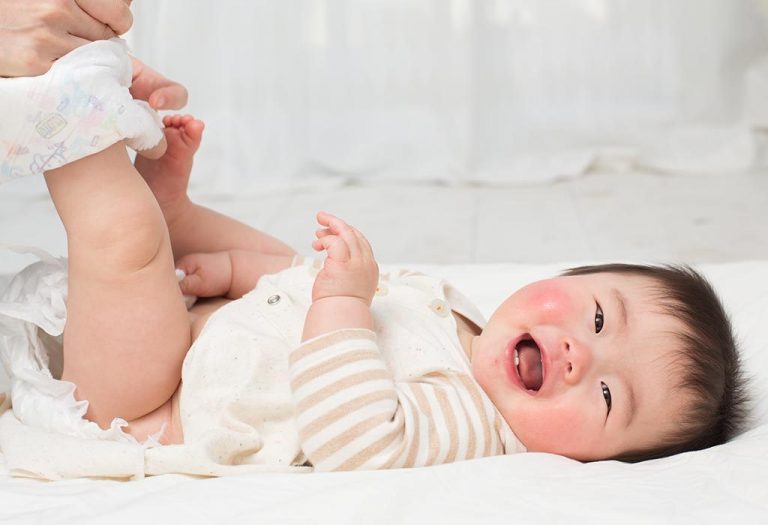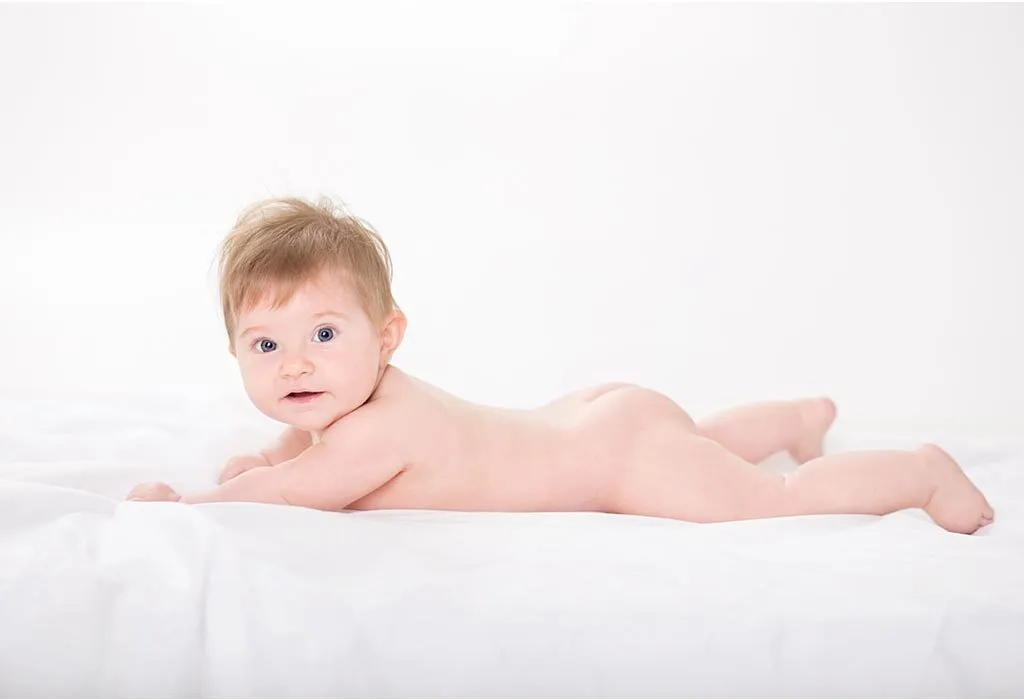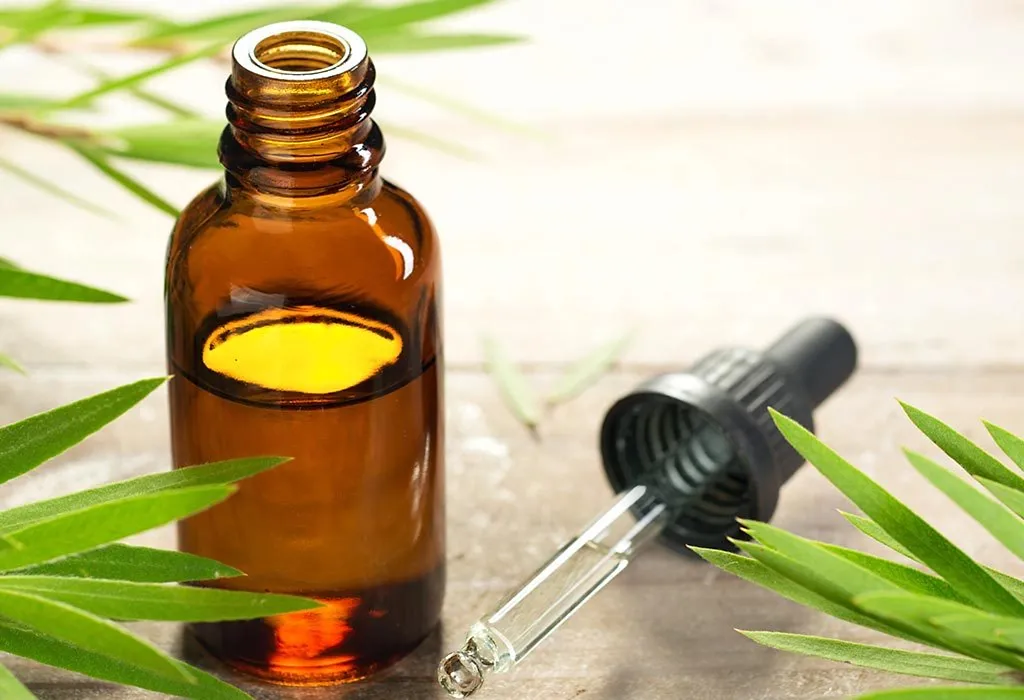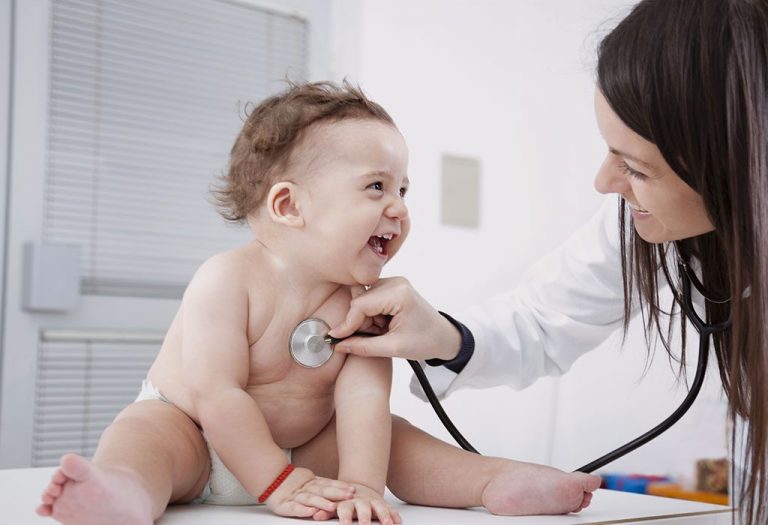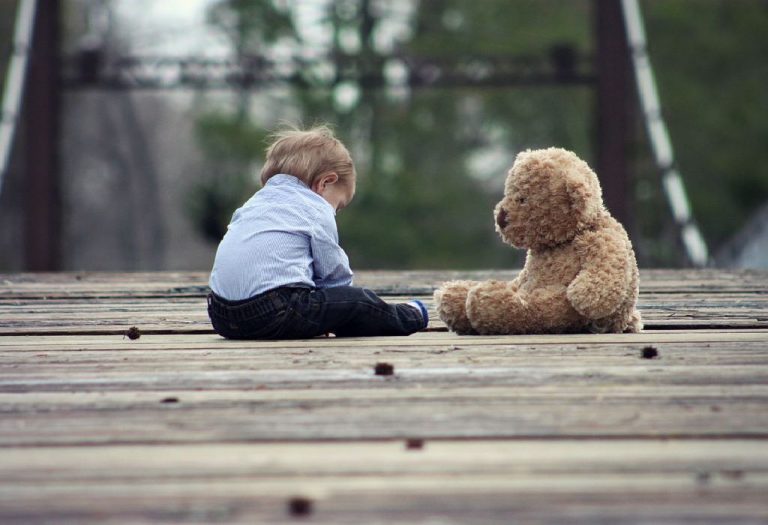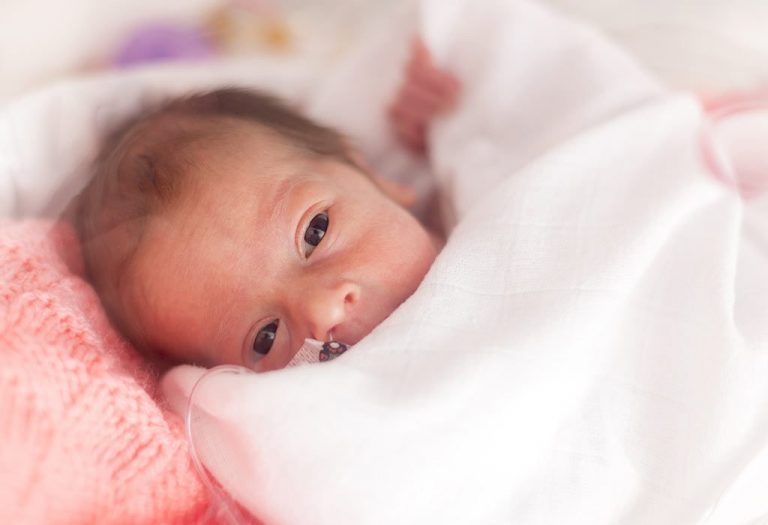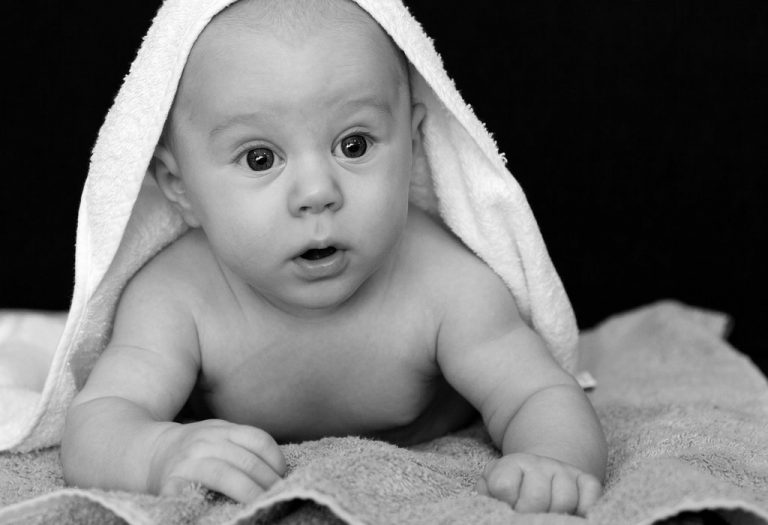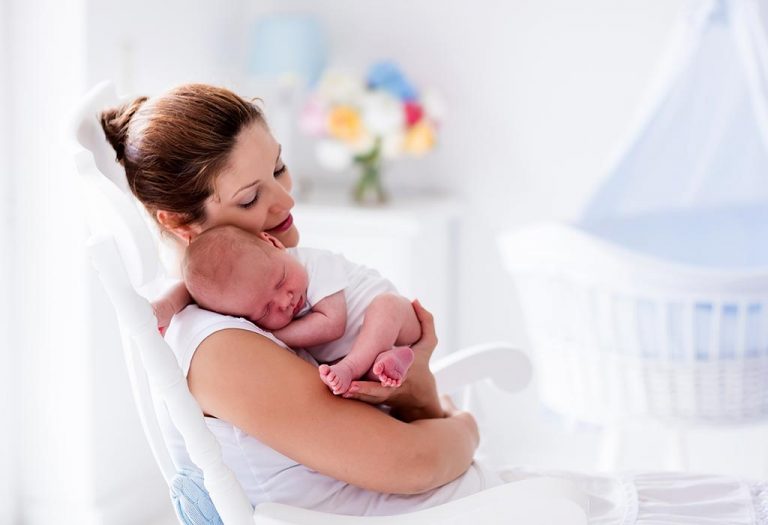Yeast Diaper Rash in Infants: Causes & Home Remedies

The appearance of diaper rash or diaper dermatitis in babies is a common occurrence. But, sometimes, a diaper rash tends to persist for long even after trying every possible cure. Such a diaper rash may develop due to yeast. Yeast diaper rash, also known as candida dermatitis, can emerge on the abdomen, thighs, genitals, and genital creases. This type of rash is often characterised by red, inflamed skin and may appear in areas where moisture and warmth are trapped, making it difficult for the skin to heal without targeted treatment. It’s important to address this specific condition promptly to prevent it from worsening.
What Is a Yeast Infection Diaper Rash?
An infection on the skin caused by the growth of fungus or yeast called ‘Candida albicans’ may lead to a diaper rash in babies. Such diaper rashes start with the softening and disintegration of the skin tissue around the anus. The infected area can then become inflamed. Some fluid formation may also be noticeable underneath the skin. Small red bumps called satellite pustules can be seen establishing at the fringes of the rash.
How Common Is Yeast Diaper Rash in Babies?
Yeast diaper rash is relatively common in babies, particularly those between 4 and 15 months old. It is estimated that approximately 10-15% of babies will experience this type of rash at some point during their infancy. The rash is caused by an overgrowth of yeast, often Candida albicans, which thrives in warm, moist environments like diapers. Factors that increase the likelihood of yeast diaper rash include antibiotic use, which can disrupt the balance of bacteria in the skin, or prolonged exposure to wet diapers. If left untreated, it can persist or become more severe.
What Causes Yeast Diaper Rash in a Child?
Diaper rash in a child is not restricted to only one cause; there are many possible reasons why a baby may get a diaper rash:
- Nonabsorbent diapers, cloth diapers, or very tight diapers can keep the baby’s bottoms moist and warm, thereby providing a conducive environment for the yeast to thrive, which ultimately causes a yeast diaper rash.
- In some cases, if the breastfeeding mom is on a course of antibiotics or the baby is taking medicines, it may increase the chances of a yeast diaper rash because antibiotics can destroy the good bacteria that hold yeast growth in check.
- A yeast diaper rash may also occur due to thrush (Candida infection in the infant’s mouth). Yeast can travel through a baby’s digestive system to reach his stool, from where it may ultimately enter his diaper area.
- Reaction to certain soaps or detergents used to wash cloth diapers can also make the baby prone to yeast diaper rash.
Signs & Symptoms of Yeast Diaper Rash in Infants
As a new parent, you won’t be aware if your child has a yeast diaper infection. So, know these signs and symptoms of a yeast diaper rash and take action if your child has it:
- The red rash has a somewhat elevated border.
- The rash continues to persist despite the usual diaper rash treatments.
- The infected area becomes scaly.
- Blisters and pimples fill with pus.
- Slight red patches or satellite lesions may appear.
- Characteristically, the rash remains under the diaper area.
Difference Between Diaper Rash and Yeast Infection
Diaper rash and diaper yeast infections are both common skin conditions in babies, but they have distinct characteristics. Here’s a comparison to help distinguish between the two:
| Yeast Infection | Diaper Rash |
| Caused by an overgrowth of yeast, typically Candida albicans. | Generally caused by skin irritation, friction, or prolonged moisture. |
| Appears as bright red patches, often with small red bumps at the edges. | May appear as red, irritated skin without the defined borders of a yeast infection. |
| Commonly found in skin folds, such as in the groin, thighs, and abdomen. | Found in any area covered by the diaper, often affecting the buttocks and genital area. |
| May develop after antibiotic use or when the baby is in a wet diaper for too long. | Often develops from wet or soiled diapers left on for an extended period. |
| Can be treated with antifungal creams or prescribed medication. | Usually treated with diaper rash creams, ointments, or more frequent diaper changes. |
| Sometimes accompanied by a shiny, moist appearance or bumps. | May present with a more dry, irritated look without bumps. |
Medical Treatment for Yeast Diaper Rash
In case the yeast diaper rash shows no signs of disappearing, it is wise to contact your doctor. Your doctor after examining the rash may suggest mild antifungal creams like Lotrimin (clotrimazole), Mycostatin (nystatin), Monistat-Derma (miconazole). He may also prescribe a 1% hydrocortisone cream if it is a severe rash. Applying the medication a couple of times a day or as suggested by the doctor may help provide a cure for the yeast diaper rash.
Home Remedies
If you are wondering how to get rid of yeast diaper rash, the following home remedies for yeast diaper rash can be helpful:
1. Coconut Oil
Applying coconut oil on a yeast diaper rash can be a useful remedy. Coconut oil has antifungal properties which can help to keep the yeast growth in check.
2. Probiotics
Probiotics encourage the development of healthy gut bacteria, which can aid in the destruction of yeast infections in our body. Consuming foods like yoghurt that contain active cultures can lower the risk of yeast infection. Spreading some live bacteria yoghurt on the rash can also be beneficial.
3. Apple Cider Vinegar
Apple cider vinegar also possesses antifungal properties. Using apple cider vinegar mixed with water in a ratio of 1:3 to wipe the baby’s bottom while changing his diaper can prove helpful in curing Candida infection.
4. Grapefruit Seed Extract
Grapefruit seed extract may be effective against yeast infection as it is a fungicide and antimicrobial. Mix 10 drops of grape seed extract with 1 ounce of purified water and use the solution to clean the infected area.
5. Fresh Air
Keeping your baby’s bottom free of a diaper for a few hours may stop yeast infection from increasing but will also help in drying out the rash.
6. Breast Milk
If you are a breastfeeding mom, you can smear some of the breast milk on the rash. Breast milk contains antibodies that may prove beneficial in killing the yeast.
7. Tea Tree Oil
Tea tree oil is an antifungal which makes it a popular treatment for skin issues. You can make a diaper cream at home by adding a drop of tea tree oil to some coconut oil and using it after a diaper change.
8. Hot Water Wash
In case your baby wears cloth diapers make sure you properly wash them in a solution of hot water and vinegar to efficiently eradicate the yeast.
9. Garlic
Garlic can help in preventing the yeast infection by strengthening the immune system. If your baby is consuming solids, you can even mix some fresh powdered garlic into his food.
10. Change in Diet
If your baby is vulnerable to repeated diaper rashes, certain changes in the diet like reducing sugars may help.
How Long Does Infant Yeast Diaper Rash Last?
Infant yeast diaper rash typically lasts about 3 to 7 days with proper treatment. However, the duration can vary depending on the severity of the infection and how quickly it’s addressed. If treated promptly with antifungal creams or medications, most cases begin to improve within a few days. If left untreated or not treated correctly, the rash could persist longer or even worsen, requiring more intensive medical treatment. It’s important to follow the healthcare provider’s instructions and maintain good hygiene practices to help speed up the healing process.
How to Prevent Your Baby from Getting Yeast Infection Diaper Rash
Here is a list of things that you may like to keep in mind to prevent yeast infection diaper rash:
- Keeping the diaper area dry and clean can help prevent the occurrence of yeast diaper rash.
- Frequently change the diapers especially after your baby soils it.
- Properly clean your baby’s bottoms with water and gently pat them dry between diaper changes.
- Be careful not to put the diaper too tightly lest it prevents proper air circulation.
- Choose absorbent diapers for your baby that keep your baby’s skin moisture-free.
- Avoid using scented baby wipes or harsh detergents to wash the diapers made of cloth.
- In case you use cloth diapers, resist using rubber over the diaper.
Yeast Diaper Rash Cream for Babies
If your baby’s diaper rash is more intense or caused by a yeast infection, it’s essential to seek guidance from your healthcare provider before selecting a treatment. Here are some commonly advised types of creams for treating yeast-related diaper rashes:
- Antifungal Creams: Creams that include antifungal ingredients like clotrimazole or miconazole are commonly recommended to treat yeast infections by directly targeting the infection.
- Barrier Creams: Zinc oxide-based barrier creams help form a protective shield over the skin, preventing further irritation while aiding in the healing process.
- Hydrocortisone Creams: For severe cases with significant inflammation, a mild steroid cream like hydrocortisone may be prescribed to reduce redness and discomfort.
When to Consult a Doctor
You may want to consult a doctor in the following cases:
- If the rash persists for long.
- If the rash appears to be spreading to other parts of the body.
- If your baby has a fever.
- If you notice sores or blisters.
- If the rash begins to ooze pus.
FAQs
1. Can a yeast diaper rash spread to other parts of the body?
Yes, if left untreated, a yeast diaper rash can spread to other parts of the body, such as the baby’s face, mouth, or other areas where skin folds are present. In some cases, the infection can also affect the baby’s mouth, leading to thrush.
2. Is it safe to use baby powder for yeast diaper rash?
No, using baby powder on a yeast diaper rash is not recommended. Powder can trap moisture and worsen the condition. It’s better to use antifungal treatments prescribed by a healthcare provider and keep the area dry with breathable diapers.
3. Does the presence of a yeast diaper rash indicate a weakened immune system in my baby?
Not necessarily. While yeast infections are more common in babies who are immunocompromised, a yeast diaper rash can also occur in otherwise healthy infants. Factors such as prolonged use of antibiotics, excessive moisture, or tight-fitting diapers are more likely to cause yeast overgrowth in the diaper area, even in babies with strong immune systems.
This was all about a newborn with a yeast infection. The incidence of yeast diaper rash in babies is usually not a dangerous situation. Maintain good hygiene and take appropriate steps to prevent the yeast from increasing. The advent of yeast diaper rashes normally reduces in babies with age and may end when babies stop wearing diapers.
References/Resources:
1. Yeast Diaper Rash; Cleveland Clinic; https://my.clevelandclinic.org/health/diseases/22307-yeast-diaper-rash
2. Common Diaper Rashes & Treatments; American Academy of Pediatrics; https://www.healthychildren.org/English/ages-stages/baby/diapers-clothing/Pages/Diaper-Rash.aspx
3. Thrush and Other Candida Infections; American Academy of Pediatrics; https://www.healthychildren.org/English/health-issues/conditions/infections/Pages/Thrush-and-Other-Candida-Infections.aspx
4. Why is my baby always getting diaper rashes?; American Academy of Pediatrics; https://www.healthychildren.org/English/tips-tools/ask-the-pediatrician/Pages/Why-is-my-baby-always-getting-diaper-rashes.aspx
5. Diaper Rash; Seattle Children’s Hospital; https://www.seattlechildrens.org/conditions/a-z/diaper-rash/
6. Diaper Rash; Boston Children’s Hospital; https://www.childrenshospital.org/conditions/diaper-rash
7. Candidiasis (Yeast Infection) in Children; Children’s Hospital of Philadelphia; https://www.chop.edu/conditions-diseases/candidiasis-yeast-infection-children
Also Read:
Rash on Infant’s Face
Diaper Buying Guide for New Parents
Cloth Diapers Vs Disposable Diapers
Side Effects of Using Diapers on Babies
Home Remedies for Diaper Rash in Babies
Was This Article Helpful?
Parenting is a huge responsibility, for you as a caregiver, but also for us as a parenting content platform. We understand that and take our responsibility of creating credible content seriously. FirstCry Parenting articles are written and published only after extensive research using factually sound references to deliver quality content that is accurate, validated by experts, and completely reliable. To understand how we go about creating content that is credible, read our editorial policy here.






